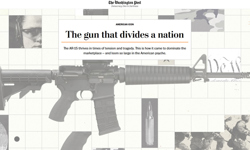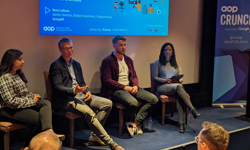Independent publishers face the same challenges as larger media organisations: how to make money from their content on the web, smartphones and tablet, but on far smaller resources. The Independent Publisher Conference, organised by the PPA, shared tips on social media, print innovation and paywalls. Here are the highlights:
1. Mobile devices are growing rapidly and tablets are mainly used for consuming content
Worldwide, smartphones are growing at 20% pa and there will be at least 370m tablet users by 2015. Consumers are using them at home and on the move principally for reading content rather than creating documents: 31% prefer to read magazines and newspapers on the iPad vs 24% in print. However the ease of publishing to tablet brings the risk of new entrants: such as brands, retailers or online communities.
2. Social media expands editorial networks and builds audience relationships but ROI still elusive
Publishers can use social media channels to publish their content outside their own site, but shared links have a half life of just 3 hours, so timing is everything. Just 1% of your community are likely to be active on social media so need to be identified and nurtured. Editors must be in control of the social media voice, and should be encouraged to build their own personal social networks for research; however publishers need a brand presence in addition as when staff leave they take their network with them. Facebook has helped Evo drive traffic and engage with readers, but it is still hard to attribute revenue. Econsultancy has analysed its sources of revenue and discovered that natural search and email still trump social media. Social media tends to drive more flighty traffic, converts to low revenues and is primarily used by existing customers not new people.
3. Beware of investing in third party platforms: socialise your own site
It's dangerous to invest too much in building communities on third party platforms such as Facebook and LinkedIn, warned Ashley Friedlein, CEO of online publisher Econsultancy. Publishers should aim to balance this out by socialising their own websites, building up blog commenting and proprietary forums.
4. Print innovations linking to digital content prove effectiveness of magazine ad campaigns
QR codes and watermarking allow magazine publishers to convert the engagement of their readers into measurable interaction, by connecting them to bespoke digital content. This provides the measurability that has been so elusive for magazine ad campaigns. Publishers need to control the analytics and offer readers exclusive content. FHM Collections ran a very successful campaign with watermarking. While costs are currently high, there may be room for smaller titles to negotiate trial rates with suppliers. Classic Rock used another print technique, a lenticular cover, and enjoyed 25% newsstand sales uplift.
5. A “porous” paywall allows ad revenues and social content sharing
The Times has 110,000 digital subs, but these are just replacing losses in print circulation, said journalist Pete Kirwan. Its policy of total lockdown limits its ad potential, and articles can't be found on search or shared on social media. A better model is that of the Wall Street Journal, where readers can view a certain number of articles before having to pay. Paid subs alone are unlikely to generate enough revenue.










